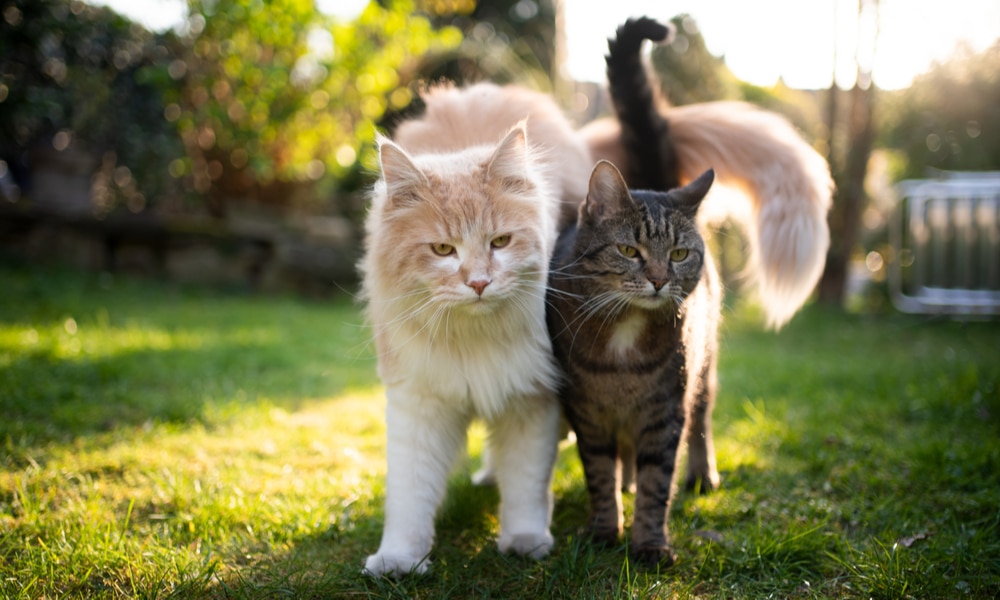In recent years, scientists have proven that cats communicate deeply with animals. human beingsContrary to what many people think. These complex creatures are able to communicate with us and even follow us movements When we are not around.

Even more surprising is the fact that they can recognize their own name (an ability we often associate with dog). Now, new methods show that this ability of cats far exceeds what we can imagine.
publicity celebrity
A new study conducted by Japanese researchers and published in the journal Scientific Reportspoints out that in addition to knowing their cats’ names, they also seem to memorize and recognize the names of other cats they are familiar with as well as the names of the people they live with.
To some people, this may seem a little strange, but if dogs can be trained to remember the names of hundreds of different things, this ability probably shouldn’t be too surprising in cats.
“What we found is surprising,” said zoologist Saho Takagi, of Azabu University in Japan, in an interview with the Asahi Shimbun website. “I want people to know the truth. Cats not only seem to hear people’s conversations, they are actually paying attention.”
Takagi and his team analyzed cats that live in homes with other felines and those that live in “cat cafes,” in places in Japan And other Asian countries that serve as shelters for these animals, where visitors can interact with them.

In the tests, the researchers showed the animals an image on a computer screen of a familiar cat from the same house/cafe (called a “model cat”). While viewing the image, the recording of the owner’s voice will sound out the name of the model cat out loud (called “matched case”) or say a different name (“unmatched case”).
Shelter cats have trouble matching names
What the team found was that household pets spent more time looking at a computer screen during the inappropriate condition, possibly because they were suspicious of or intrigued by the mismatch of a typical cat’s name and picture.
However, the same behavior was not detected in the shelter animals, probably because they lived in dwellings with many other cats (not just a few), and as a result were not familiar with the selected model cats and their name.
“Domestic cats only predicted a specific feline face upon hearing the cat’s name, indicating that it matches the name of the stimulating cat and the specific individual,” the researchers wrote in their paper. “When hearing the name of a cat, participants expected the opposite face.”
according to Science alertThe team believes that these creatures likely learned this type of name association by watching third-party interactions in the home, and it is possible that the animals that live in the cat cafes — surrounded by dozens of kitties, as well as the stream of anonymous humans entering the establishment — do not have Same opportunities to socially learn each other’s names.
Read more:
In another experiment, the researchers ran a similar test, but used humans as a stimulus rather than a cat model. The cats were exposed to the image of a person with whom they lived (in a house with several residents), and at the same time the person’s name was pronounced (or another name was said in an inappropriate case).
Again, the cats seemed to tend to the computer screen a little longer when there was a mismatch between the picture and the name, but this effect tended to be greater in homes where more people lived and in homes where the cat lived. family.
“Our interpretation is that cats who live with more people have more chances of hearing the names used than cats who live with fewer people, and that living with a family for longer increases this experience,” the researchers said. “In other words, the frequency and frequency of exposure to stimuli may increase the likelihood of noun association.”
It should be noted that although the researchers claim that their research provides “the first evidence that domestic cats link human expressions and social references through everyday experiences,” this study is still very small, and involves sampling only a few dozen people. cats, so their findings need to be confirmed in future investigations.
Although the animals in the study seemed to associate names and faces (to both familiar people and other cats), it is still not possible to understand in any definitive sense how they develop this association in their environments. Part of this is explained simply by the difficulties of studying cats, which scientists have pointed out. “The cat only completed the first test before escaping the room and out of reach.”
Have you seen our new videos on Youtube? Subscribe to our channel!

“Music fanatic. Professional problem solver. Reader. Award-winning tv ninja.”






More Stories
Couple retakes glacier photo after 15 years, surprised by changes: ‘It made me cry’
Two killed in hotel collapse in Germany – DW – 07/08/2024
Lula speaks for half an hour on phone with Biden about Venezuela’s electoral impasse | Politics